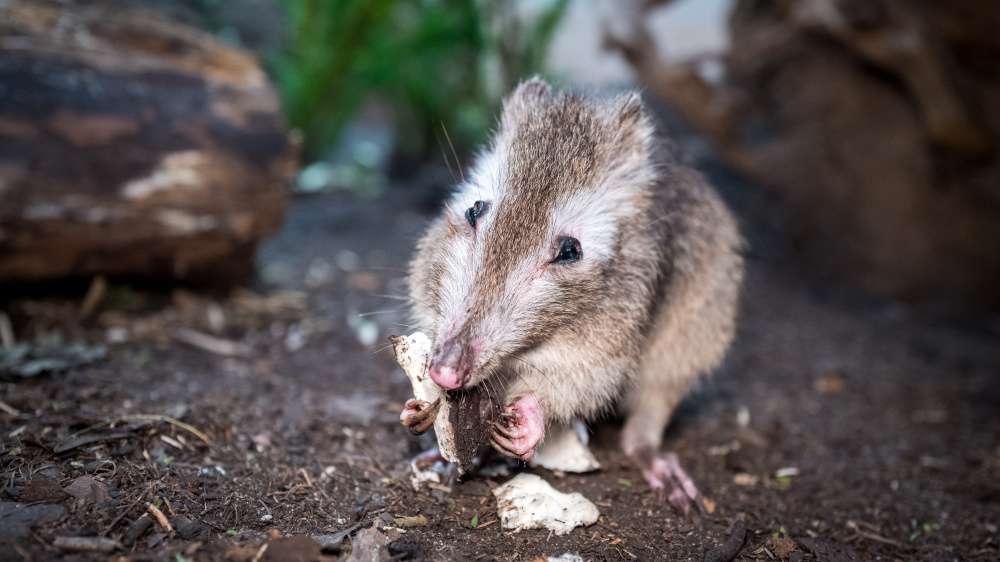Immortal Scabbers
Miroslav Bobek | 07. 11. 2020
Our Scabbers was named by the keeper David Vala after the rat that plays an important role in the third Harry Potter book, the Prisoner of Azkaban. Scabbers in our zoo resembles a rat to a large extent and it gives a rather baldish impression. On top of that she is along with Potter’s Scabbers very, very old. It could be said that she has already lived two lives in a row. However, she is not a rat, but a female of the longnosed potoroo. And thus, a marsupial. When I started to photograph her regularly in the autumn of 2020, she was pushing twelve, while members of her species live to be five or six years in the wild.

Scabbers enjoys a portobello mushroom. Photo: Miroslav Bobek, Prague Zoo
Scabbers has become a sort of celebrity here. Not directly because of her age, more due to its consequences. She has lost most of her sight and hearing, so she shows herself in the exposition regardless of what is happening in the visitors’ area. And she gladly comes to the door to the background area using her sense of smell for mushrooms, served to her by David.
Yes, for mushrooms. Potoroos – and not only long-nosed potoroos – adore them more than Czechs and other Slavs, and fungi constitute significant, if not the predominant part of their diet. In the mornings Scabbers gets oyster mushrooms and portobello in the afternoons, which David presents with a similar panache as if a waiter were offering a guest in a restaurant the finest delicacy. In the wild, in not only for their loss, but also because for the environment, for which they provide priceless services of “ecosystems engineers” by their digging and spreading of the fungi.
However, let’s go back to Scabbers. When she comes to enjoy the portobello mushroom that she takes in her little front paws, the signs differentiating long-nosed potoroos from rats, together with her almost white strips of fur stretched across the slightly bleary eyes are well visible. For one thing, this greyness of old age enables her to be easily Australia, long-nosed potoroos feed mostly on subterranean fungi (let’s mention truffles in this context), but they are already rare there and their habitat is fragmented. It is a pity identified, on the other hand, it contributes to the impression of her being a bit baldish. It is certain that only the conditions in the zoological garden have enabled Scabbers to reach such a ripe age. She would have become a victim of a fox or cat in Australian bush long ago – as it was and is happening to an immense number of other representatives of original Australian fauna. However, in our zoo we had a good reason to believe that Scabbers would live to the age of a dozen years. I had been really looking forward to the celebration of her twelfth birthday for a long time and the article, which I had published more than half a year in advance, I had ended with a double appeal: “Let’s keep our fingers crossed for Scabbers and us as well, so we can celebrate her birthday together. And if anybody would like to provide her with truffles at this opportunity, she definitely would not be offended.”








